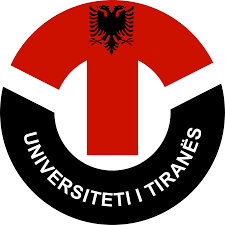|
Welcome to the website: Fluturat e Shqipërisë
This website was launched on Monday October 30th 2023 and is hosted by the Universiteti i Tiranës.
The website
has the following intentions and ambitions:
- to be complete and dynamic, providing the latest butterfly news and Atlas.
The current Atlas (observations until the end of December 2024) includes the results of the samples from the 2024 surveys that required dissection and/or COI barcoding.
- to be interactive, welcoming any information, data of observations, photographs, questions or comments.
- to provide a chronological overview of the Updates.
In the banner, the eye on a wing of Flutura sypallua e ditës (Aglais io) symbolizes the creativity of the Albanian people.
The Admiralja (Vanessa atalanta ) mimices the Albanian flag and the logo of Tirana University.
An identifcation tool is in development for all butterflies of the Balkan peninsula and adjacent areas. The ID-tool for the challenging Hesperiidae family is already available.
Access via the  icon in the yellow banner. icon in the yellow banner.
We hope that the website, updated on 09.i.2025, will open the door for more study of the Albanian butterfly fauna.
How to cite this website:
Cuvelier S. & Paparisto A. 2025. Fluturat e Shqipërisë – Butterflies of Albania. [Interactive website and dataset]. University of Tirana.
Zenodo. https://doi.org/10.5281/zenodo.15857645 – Access the interactive atlas at: https://biodiversity.unitir.edu.al
Introduction
Albania (Fig. 1) is a Mediterranean country of the Balkan Peninsula (Fig. 2) in southern Europe. Albania (with an area of 28,748 km² bordering Kosovo,
Montenegro, the Republic of North Macedonia and Greece) is one of the
European countries with a rich biodiversity heritage (Zeneli et al. 2014). The Albanian coastline is
476 km long and the Adriatic and Ionian Seas have a great
influence on the country's climate, flora and fauna.
From the fertile coastal plain near the Adriatic Sea, the
Albanian land rises into hills and mountains to the North
(Albanian Alps) and East (Korabi Mountain). Most of the
country is mountainous, but the altitude falls from
East to West and this strongly affects the climate, soil and vegetation. The highest peak is
2,751 m above sea level (Korabi Mountain) and the lowest
locality is 8 m below sea level (the former Tërbufi Marsh).
The average altitude of the country is 708 m above sea
level. The climate of Albania is diverse. It has four major
climatic zones and 13 sub-zones, which contribute to the
country's rich biological diversity. The climatic type of
Albania is Mediterranean subtropical with average annual
temperatures up to 17.6°C
in the South. Precipitation
ranges between maximum ± 2,500 mm in the North
(Albanian Alps) and minimum ± 750 mm in the South
(Korçë district), with an average of about ± 1,430 mm.
Although being a small country, Albania is
distinguished for its rich biological and landscape
diversity. This diversity is attributable to the country's
geographic position as well as geological, hydrological,
climatic, soil and relief factors. The mountainous terrain (Fig. 4, Fig. 6, Fig. 7, Fig. 8) combined with steep cliffs creates ideal conditions for
maintaining and protecting a large number of ancestral
species which are both endemic and sub-endemic (Fig. 5).
The high diversity of ecosystems and habitats (marine
and coastal ecosystems, wetlands, river deltas, sand
dunes, lakes, rivers, Mediterranean shrubs, broadleaf,
conifers and mixed forests, alpine and subalpine pastures
and meadows and high mountain ecosystems) offers a
large variety of plants and animals (Fig. 3, General Chapter 8). In Albania, there are
around 3,976 taxa of vascular plants and 756 species of
vertebrates. Approximately 30% of the European flora
occurs in Albania. There are 32 endemic taxa and 160 near
endemic species of vascular plants which have a special
protection importance for the country.
The high Albanian forests maintain communities of
large mammals such as wolf, bear, lynx, and wild goat and also characteristic bird communities, which are associated
with virgin forests. Coastal lagoons and large lakes inside
the country are important areas, especially for wintering
migratory birds. Annually, 70 waterfowl and water-bird
species are met in Albania with a total population of
180,000 individuals during the winter. Albania is also an
important crossroads for the migration of birds, bats, and
insects.
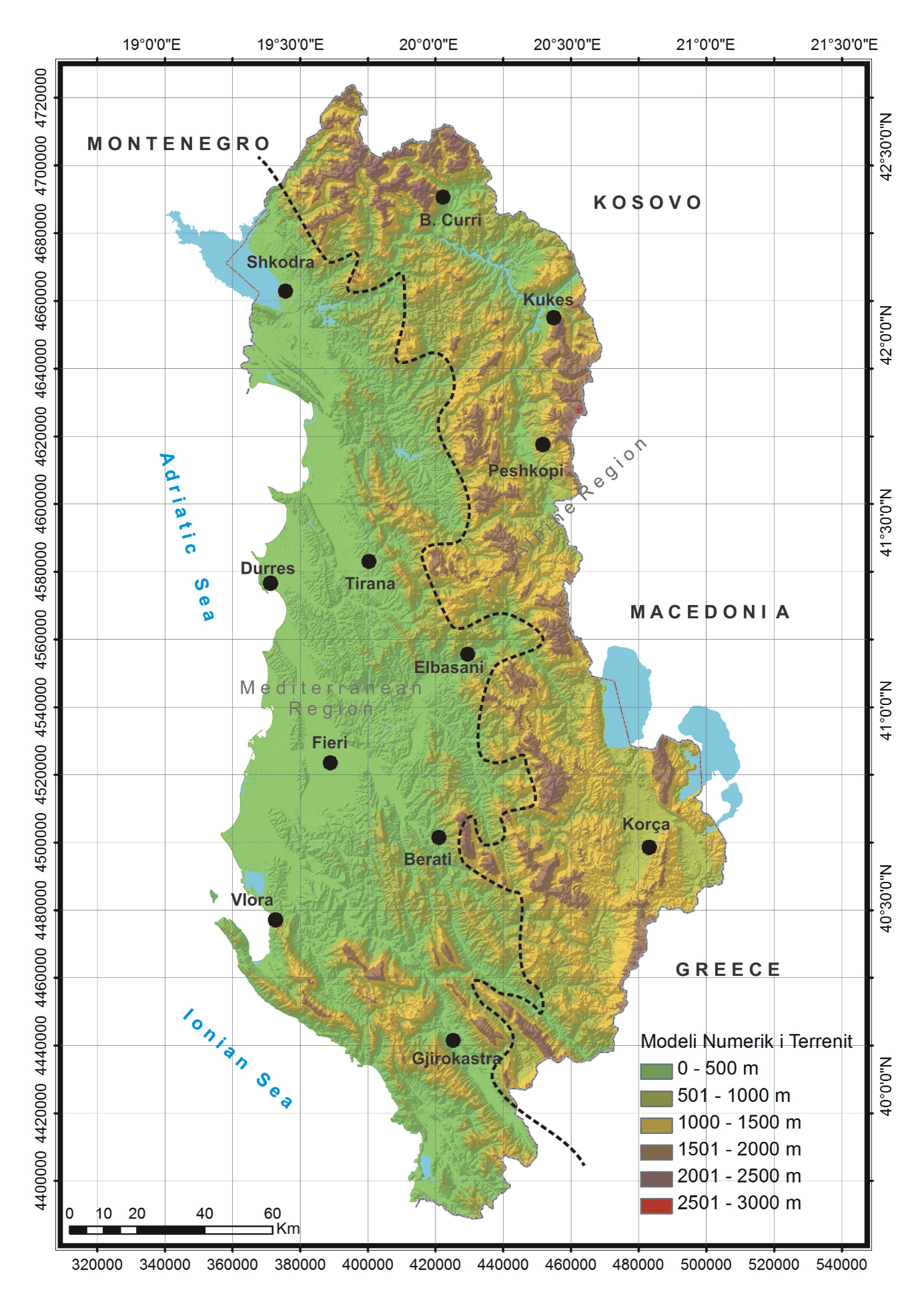  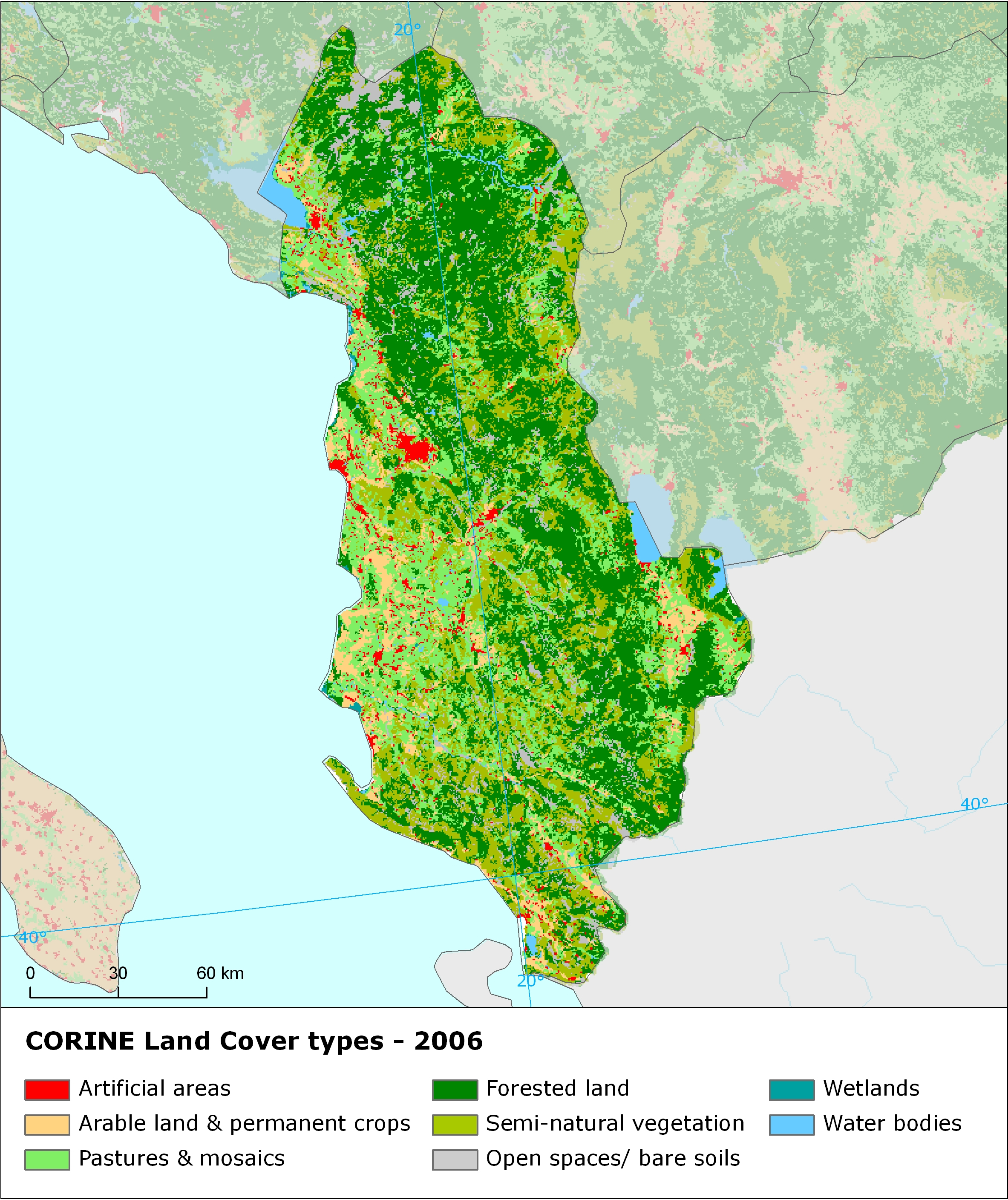
1. Topographic map of Albania, dotted line: average altitude, 708
m a.s.l. (© AP)
2. Main mountain areas and political boundaries of the countries in the Balkan peninsula .
3. Albanian land cover map 2006 (European Environment Agency)
 
| 4. Mountainous terrain of Albania (© SC) |
5. Pseudochazara amymone (© SC) |
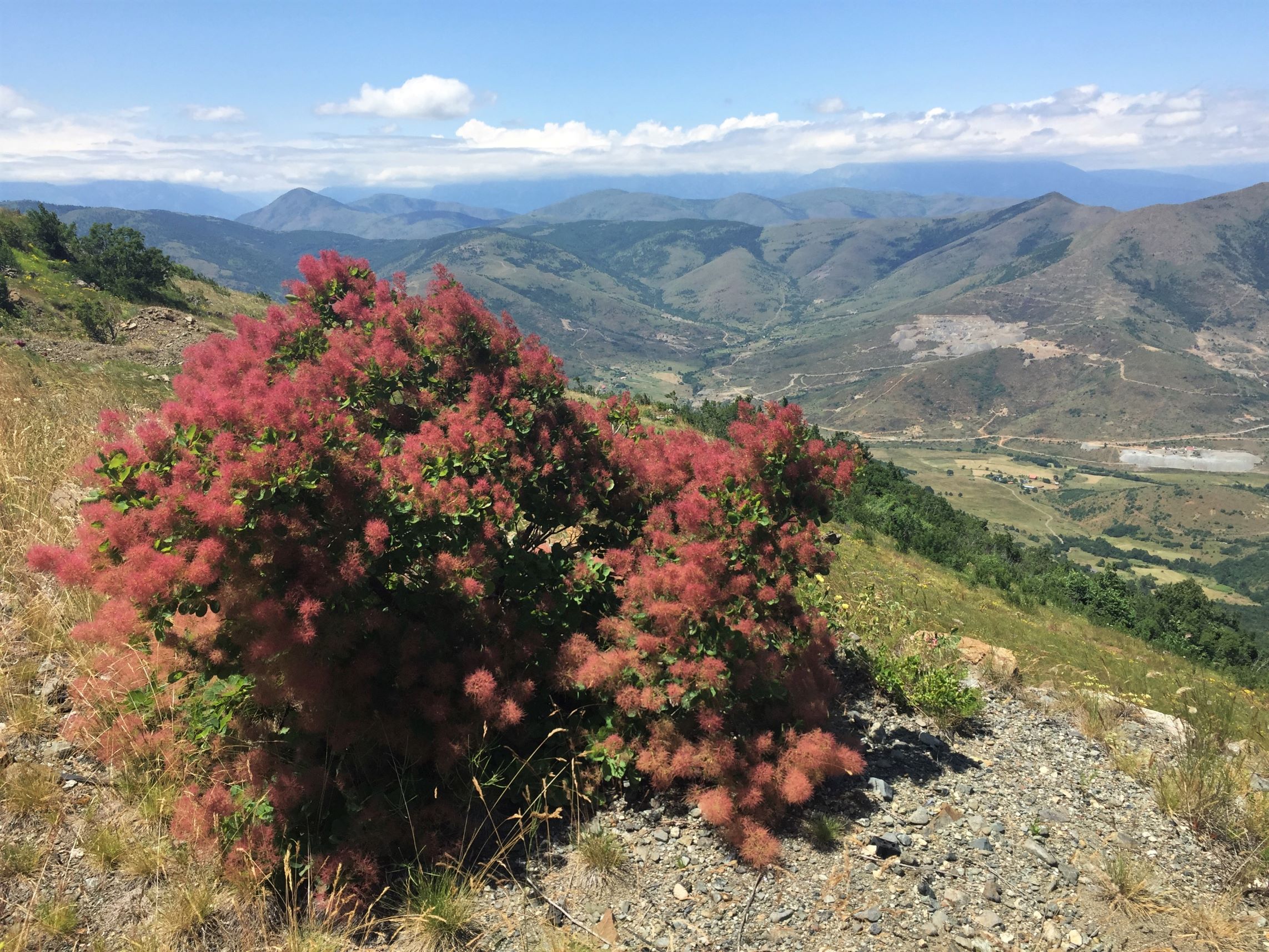 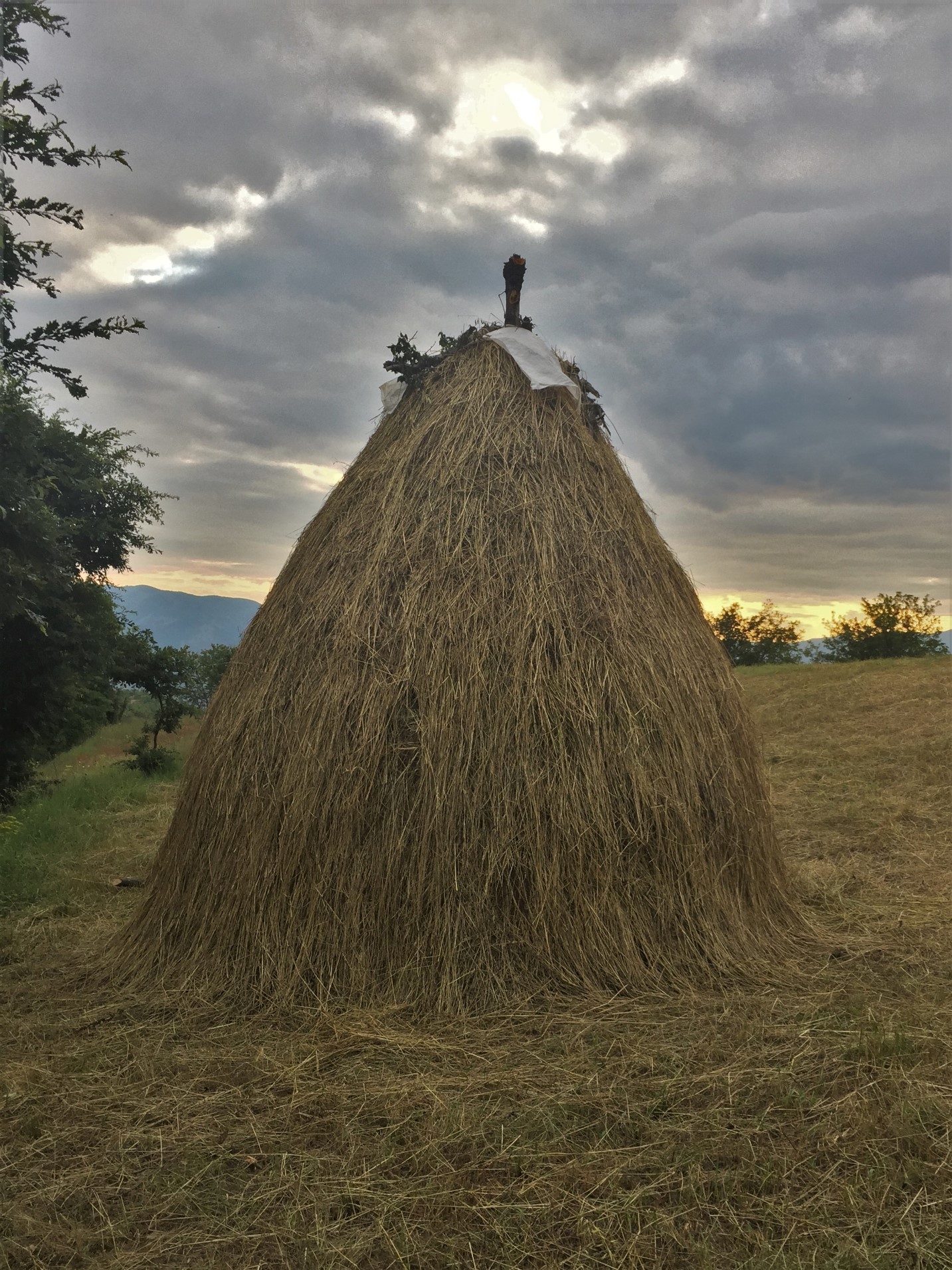 
| 6. Hasi district (© SC) |
7. Haystack near Librazdh (© SC) |
8. Landscape in Shebenik (© SC) |
There are some 91 globally threatened species found
in Albania. These include the Dalmatian Pelican (Pelecanus
crispus), Pygmy Cormorant (Phalacrocorax pygmeus), and
the Sturgeon (Acipenser sturio) for which Albania is a
country of particularly critical importance. Based on the
data of the Red Book of Albanian Fauna (Misja 2006) there
are 224 species of invertebrates in the Albanian red list,
between them there are 61 mollusks and 146 arthropods
of which there are 125 species of insects and 91 of them
are member of the order Lepidoptera.
In spite of the fact that a low number of species
became extinct during the past century in Albania, the loss
rate of its biodiversity during the last 50–60 years is
believed to have been increasingly high. Moreover,
insufficient knowledge and studies of a wide range of flora
and fauna limit an accurate historical evaluation of the
possible loss of biodiversity within Albania.
Two species of plants and four species of mammals
have become extinct and meanwhile 17 bird species no
longer nest in the country's territory. During the last 25
years, approximately 122 species of vertebrates (27
mammals, 89 birds, and 6 fish) and four species of plants
are considered to have lost more than 50% of their
populations.
The number of rare and endangered species of plants
and animals is high and expected to increase if
appropriate conservation measures are not taken.
It is clear that the Lepidoptera have not been studied
as they have been in many other European countries. This
insufficient knowledge in part resulted from linguistic
differences making access to some important, local
publications difficult e.g. Misja (2005).
In van Swaay & Warren (1999) the data quality for
Albania was quoted by Prof. Kastriot Misja (Museum of
Natural Sciences, Tiranë, Albania) as moderate for the
estimation of the distribution and as poor for the
estimation of trend. These facts concerning the Albanian
butterfly diversity and distribution are also highlighted by
the low number of publications over more than a century
(Rebel 1913, 1917, Rebel & Zerny 1931, Moucha 1963,
Alberti 1965, Popescu-Gorj 1971, Murraj 1972, Misja &
Kurrizi 1984, Luquet & Misja 1989a, 1989b, Gaskin 1990,
Misja 1993, Beshkov 1994, 1995, Beshkov & Misja 1995,
Abadjiev & Beshkov 1996a, 1996b, van Swaay & Warren
1999, Misja 2003, 2005, Striniqi-Laçej 2008, Płóciennik et
al. 2009, Eckweiler 2012, Striniqi-Laçej & Misja 2013,
Verovnik & Popović 2013a, 2013b, Gascoigne-Pees et al.
2014, Verovnik et al. 2014, Cuvelier & Mølgaard 2015,Šašić et al. 2015, Micesvki 2015, Cuvelier et al. 2016,
Sachanowicz et al. 2016).
Through the years the borders of Albania have
changed. Some historical butterfly observations concern
localities that now are situated in the Republics of
Montenegro, Kosovo or Macedonia.
Considering its area, geology (Fig. 9) and general climate (Fig. 10) there
is however no doubt that Albania has a high biodiversity
for butterflies and can play an important role in the
conservation of some threatened and near threatened
butterflies on the Mediterranean Red List (Numa et al.
2016).
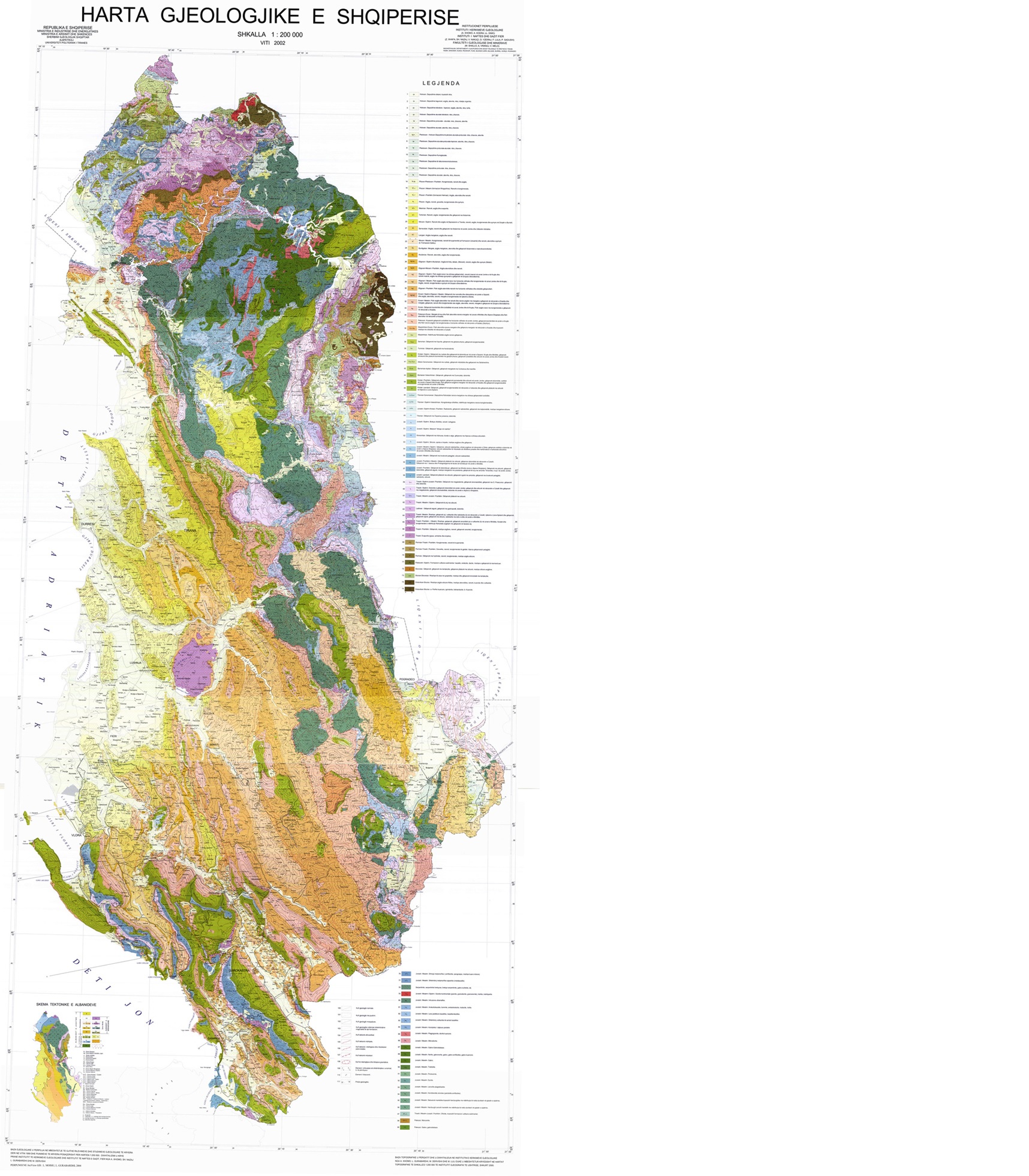 
Fig. 9. Geological map of Albania (© Geological Service Albania / Sherbim Gjeologjik Shqiptar)
Fig. 10. Climatic map of Albania (© Isiderov 1995 and Mitrushi 1995)
In recent years, the country became more accessible
to foreigners. Recent surveys (Eckweiler 2012, Verovnik &
Popović 2013a, Šašić et al. 2015, Cuvelier et al. 2015,
Micevski 2015, Sachanowicz et al. 2016) increased the
number of confirmed butterfly species for the country or
added important extensions to their known distributions.
However, the data remained insufficient (Verovnik &
Popović 2013b) because not only new species for the
country could be expected but also the knowledge
about their distributions in Albania vastly
improved.
In 2017, two new expeditions in Albania focused on less explored areas and other entomologists were contacted in search for unpublished data.
A new publication (Cuvelier, Parmentier, Paparisto & Couckuyt 2018a) presented the results of the new surveys, unpublished observations from other researchers and the analysis of the collection in the Natural Sciences Museum of Abania in Tiranë.
After inclusion of all the data, a new checklist and an atlas (Cuvelier, Parmentier, Paparisto & Couckuyt 2018a-b) were presented, comparing the historical data with the results of the recent expeditions, This new atlas consisted of dot distribution maps for all the confirmed species according to the broadest possible background available at that time.
Since the last atlas, new expeditions and surveys revealed important novelties and asked for a review.
We combine the new publication (Cuvelier, Parmentier, Qirinxhi & Paparisto 2023) with the launch of this website to:
1.
Increase the awareness and research on the rich and interesting Albanian butterfly fauna.
2. Call for sharing all unpublished observation data and from future surveys.
3.
Adjust dynamically the checklist when new data are available.
4. Adapt the distribution cards to new incoming data.
The website is hosted by the University of Tirana and
will now fully meet the objective of a dynamic Atlas.
An update of all the maps will be implemented annually at the end of the season.
We hope that the website will arouse your interest in the Albanian butterflies so that we can pursue our four objectives together with many colleagues entomologists,
Sylvain and Anila.
= Contributed equally to the concept and the development of the website Fluturat e Shqipërisë.
|
 xx
xx 